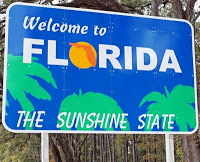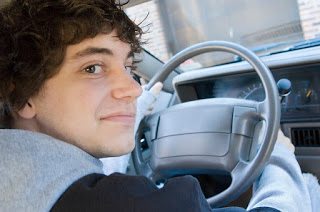Tag Archive: Teen drivers

Teens and Nighttime Single Vehicle Crashes
November 16, 2009
As you read the daily news, a familiar pattern begins to occur. You begin to notice the car crashes that happen at night with only one vehicle involved. Many times, these crashes involve teen drivers.
Is it your imagination? No.
Many typical characteristics of teen crashes are:
- Teens are more likely than any other age group to be involved in a single vehicle crash. Among passenger vehicle drivers’ ages 16-19 involved in fatal crashes in 2008, 49 percent were involved in single-vehicle crashes. (Insurance Institute for Highway Safety)
- Nighttime fatal crash rates for 16 year olds are nearly twice as high as daytime rates. Centers for Disease Control and Prevention (CDC)
- In 2008, 37 percent of the 15- to 20-year-old male drivers who were involved in fatal crashes were speeding at the time of the crash.
Nighttime driving not only diminishes a driver’s visibility, but also their distance and speed perception, making it harder to judge a situation and respond quickly. Speeding decreases the time and space available to react and increases the severity of any injuries. Many times teenagers react too quickly and overcorrect or lose control of the vehicle, resulting in a single-vehicle crash. Drowsy driving is also more prevalent at night, and teens are especially vulnerable to fatigue and need additional sleep during this developmental time. In addition, other drivers on the road are more likely to be less attentive, drowsy or under the influence at night.
What can be done?
Create and enforce stricter Graduated Drivers Licensing (GDL) laws that give teens the privilege of driving but limit their exposure to higher risk situations encountered, by restricting nighttime driving, teen passengers and cell phone use. Experience behind the wheel is best gained in the daytime when accompanied by an experienced adult driver and under ideal driving conditions. GDL has proved successful in reducing crashes and fatalities among teen drivers as they progress to unrestricted driving at age 18.
Teens are ready to drive and need to be given the tools to drive safely. Understand the risk factors that young teen drivers face and place limits on driving privileges until they acquire the valuable experience needed to develop those tools safely.

Top 3 Most Dangerous Cities for Teen Drivers are in Florida
August 29, 2009
Two studies, one by Allstate Insurance Company and the other by Reader’s Digest, indicate that geography plays a part in teens’ risk of injury and death in motor vehicle crashes. And because of their age group, teens are already at great risk. The number one killer of American teens is motor vehicle crashes; one study shows that the problem is particularly serious in Florida. Every year, over 5,000 people aged 16-20 are killed in motor vehicle collisions, according to the National Highway Traffic Safety Administration.
The ten riskiest cities out of the 50 largest urban areas in the US were selected using statistics from the national Census Bureau, federal crash data, and company claims information on teen passenger vehicle collisions. The most dangerous US cities for teen drivers are Southern, with the top three in Florida. Of the top 50 cities in the country for teen fatality crashes, Tampa/St. Petersburg/Clearwater, Orlando/Kissimmee, and Jacksonville rank number one, two and three, respectively.
The analysis by Reader’s Digest categorizes states according to their current Graduated Driver’s Licensing (GDL), seat belt, and Driving Under the Influence (DUI) laws. According to the study, Alaska, California and Delaware rank as the top three; three of the worst states include North Dakota, Mississippi and Arkansas. Florida is categorized as “Fair,” the next-to-lowest ranking. Interestingly, California cities also scored high in the Allstate study: San Francisco/Oakland, San Jose, and Los Angeles were numbers one, two, and four.
Factors that contribute to teen motor vehicle crashes include:
- Speeding/driving too fast for conditions -Driver distraction, including cell phone use and dealing with passengers -Inexperience -Driving at night -Driving under the influence of alcohol or drugs (including prescription and over-the-counter drugs)
- Teens also often neglect to wear their seat belts, increasing the risk of serious injury or death in a crash. An observational study by the Utah Department of Health found that the teen seat belt use rate falls when other high-risk factors are present, such as when teens drive under the influence of alcohol, drive at night, have multiple teen passengers, or are driving without a driver’s license.
The risk factors listed above, including seat belt requirements, are addressed by GDL laws in many states. Before advancing to the next phase of licensure, young drivers must show progress by complying with specific restrictions. Driver education was a part of the curriculum in 90% of US high schools during the 1980s; in 2009, only 20% do. GDL laws are of increasing significance in the effort to reduce teen crash rates, because teens get most of their driver training from their parents and are often subject only to state requirements after licensure.
While a national model for GDL laws has existed since the mid-1990s, no state follows all of the requirements. To show the disparities among states, The National Safety Commission (TNSC) analyzed the GDL laws in four states: California, Florida, Mississippi, and North Dakota.
- The minimum age for a learner’s permit in California is 15 years, six months; the minimum age is 15 in Florida and Mississippi. In North Dakota, the minimum age is 14.
- While California and Florida each require 50 hours of practice driving with a parent or guardian in the learner’s permit stage, 10 hours of which must be at night, neither Mississippi nor North Dakota require parental certification of any driving practice hours.
- North Dakota does not have any passenger or nighttime restrictions, and Florida and Mississippi have only nighttime restrictions. California’s passenger restriction is that for the first 12 months, the restricted driver may have no passengers younger than 20, with limited exceptions for immediate family.
Comprehensive GDL laws reduce deaths among 16-year-old drivers by 38%, according to a study by Johns Hopkins University for the AAA Foundation for Traffic Safety; the Reader’s Digest study also supported the idea that better GDL laws mean that fewer teens will die in motor vehicle crashes. However, TNSC points out that parents must actively participate in their teens’ driver education by enforcing GDL laws as house rules, rather than leaving the issue to law enforcement. The possibility of legal consequences for teens who don’t abide by their state’s GDL laws should serve as support for parental restrictions, not take the place of them.

Teens and Motor Vehicle Crashes
August 28, 2009
The tragedy occurred on the last day before summer vacation. An SUV transporting a group of teens to the beach rolled over after a tire blowout. In the aftermath, four teens died, four were hospitalized, and the teen driver faced criminal charges.
Almost everyone knows a distressing story like this one; deaths of teens due to motor vehicle crashes are often well-publicized amid great community sympathy for the loss of young lives and the potential they held, as well as the devastation of surviving parents and friends. And they speak to a larger statistical reality – that motor vehicle crashes are the leading cause of death for 15- to 20-year-olds, according to the National Center for Health Statistics – that much of America seems to be both aware of, but unsure of how to change.
Consider the following statistics from the National Highway Traffic Safety Administration (NHTSA):
- There were 202.8 million licensed drivers in the United States in 2006 (2007 data not available). Young drivers between 15 and 20 years old accounted for 6.4 percent (13.0 million) of the total, a 7.2-percent increase from the 12.1 million young drivers in 1996.
- In 2007, 13 percent (6,982) of all drivers involved in fatal crashes (55,681) were young drivers age 15 to 20 years old, and 15 percent (1,631,000) of all drivers involved in police-reported crashes (10,524,000) were young drivers.
- In 2007, 3,174 15- to 20-year-old drivers were killed and an additional 252,000 were injured in motor vehicle crashes.
- Among 15- to 20-year-old drivers involved in fatal crashes in 2007, 31 percent of the drivers who were killed had been drinking.
- In 2007, 64 percent of the young drivers of passenger vehicles involved in fatal crashes who had been drinking were unrestrained. Of the young drivers who had been drinking and were killed in crashes, 75 percent were unrestrained. -During 2007, 35 percent of the motorcycle riders between 15 and 20 years old who were fatally injured in crashes were not wearing helmets.
In addition to mistakes made while driving, teens are susceptible to other lapses in judgment concerning motor vehicles that can lead to injury or death, such as car surfing. According to Science Daily, the states with the highest car-surfing fatality rates are California, Florida, and Texas; all three states have shown an increase in car-surfing deaths since 2000.
Though these three states show high levels of risky teen behavior concerning motor vehicles, a study conducted by Allstate Insurance Company indicated that rural areas have much higher rates of fatal motor vehicle crashes involving teen drivers than metropolitan areas; consequently, states with large rural areas have the highest rates of fatal crashes involving teen drivers. These states are:
- Mississippi
- Alabama
- Kentucky
- Missouri
- Arkansas
Nationally, Allstate’s research showed, fatal crash rates for teens were more than twice as high in rural areas than in metropolitan areas.
While considerable attention is paid to the issue of drunk driving among teens, law enforcement agencies report that speeding is the leading cause of motor vehicle crashes involving teen drivers. Allstate’s study found that law enforcement identified speeding as a factor in 34% of motor crashes nationwide, while alcohol was cited in just 12% of crashes.
In addition to the risk teens take when driving or when riding in a vehicle with other teens, teens suffer when a member of their peer group dies in a motor vehicle crash, particularly when they suffer multiple losses from crashes such as the example at the beginning of this article. Because of the feeling of invincibility that is characteristic of this age group, teens typically have not considered the deaths of people their age a possibility, so when such a thing occurs, their world may seem to be crashing down around them. This means that even teens who were not particularly close to the person who died can be stunned by their reaction to it. Due to their level of psychological maturity, teens are ill-equipped to understand the grieving process and may be overwhelmed by feelings of being out-of-control, insecure, and scared, in addition to sorrow and grief. They may descend into melancholy that lasts years, greatly affecting their development. Some teens numb their feelings by participating in high-risk activities such as:
- Alcohol and drug abuse
- Reckless sexual activity
- Withdrawal from family and friends
- Taking risks involving motor vehicles
Depending on the loss, some teens experience a change in their circle of friends. Obviously, this can have positive or negative results, but regardless, it is another change in a rapidly changing world for the teen. Teens who lose friends to death may see their grades drop and their focus change as they struggle to fit into a new group of friends at a time when they feel especially vulnerable.
Parents and other authority figures can help teens channel their grief in healthier ways by:
- Being available to listen – not, necessarily, to talk
- Allowing teens the freedom to process their grief with others, such as friends, extended family, and professional counselors
- Encouraging teens to express themselves through writing, drawing, and memorializing their deceased friends
- Realizing that the teens’ mourning process may be prolonged and letting teens know that there is no timetable for grief
Though the federal government, state governments, and community-based organizations are making efforts to reduce the number of teens who die in motor vehicle crashes, the statistics above indicate that there is still much work to be done. Forty-six states and the District of Columbia have three-stage Graduated Driver Licensing (GDL) programs in which restricted licenses are issued to beginning teen drivers, with the restrictions reduced over time. However, no state has incorporated all of the GDL components recommended by the Insurance Institute for Highway Safety, the National Transportation Safety Board, and NHTSA.
State-level programs that include peer-to-peer teaching and learning about driver safety are effective in reducing teen motor vehicle crash rates. Texas’ Teens in the Driver Seat is one such program; teen crash deaths have dropped 32% and the number of teen drivers involved in fatal motor vehicle crashes is down 33% since the program began. A similar program in Illinois called Operation Teen Safe Driving has helped achieve a 10% reduction in teen motor vehicle fatalities in Illinois during the first seven months of 2009. Mothers Against Drunk Driving (MADD), Students Against Destructive Decisions (SADD) and other advocacy groups sponsor many public education campaigns to persuade teens not to drive under the influence of alcohol or drugs.

Four Ways Teens Benefit from Following Graduated Driver Licensing Laws
May 8, 2009
It isn’t uncommon for teens to rebel against Graduated Driver Licensing (GDL) laws. They may reason that since they passed the driving test, they shouldn’t have to deal with restrictions. Or they may be unfamiliar with the GDL laws in their state and violate them unintentionally. But there are many benefits to obeying GDL laws for teens, such as:
1. They’re a chance to prove your maturity and trustworthiness. One of the basic requirements for functioning in our society is the ability to follow the rules. Teens who are unwilling to do so demonstrate a lack of maturity and make other people, specifically adults, think they can’t be trusted. Conversely, showing that you’re willing to abide by certain restrictions lets adults, specifically your parents, know that you are grown-up and dependable enough to handle additional privileges.
2. They can help you get out of risky situations with your pride intact. You may have the best intentions of following GDL laws, but sometimes friends make that a challenge. It might be hard to resist when a friend wants you to break curfew or pile one too many passengers into your vehicle; GDL laws give you an outside authority you can blame for your refusal to do these things. You can explain that you don’t want to get caught breaking the law because you might lose your license and/or your parents might ground you from driving if you get a traffic ticket.
3. They’re the law. You won’t be lying if you tell a friend you are afraid of losing your license for breaking GDL laws; violating the terms of the law could result in the loss of your driving privileges. If you get a ticket for breaking a GDL law, you will have to pay a fine and your insurance rates, which are already high, could increase. After accruing a certain number of points on your license, you could lose it for a specified period of time and have to pay more fines to get it back. Ignorance of the law is no excuse, so be sure to familiarize yourself with the GDL laws in your state.
4. They really do keep you safe. GDL laws exist because statistically, teens get into many more crashes than adult drivers. According to the National Highway Traffic Safety Administration (NHTSA), sixteen-year old drivers have crash rates that are about three times greater than 17-year-old drivers, five times greater than 18-year-old drivers, and approximately twice the rate of 85-year-old drivers. We know that GDL laws work, because there has been an overall decrease in fatal crashes involving teens nationally since GDL laws began to be implemented. Specific restrictions have also been found to be effective; for example, an NHTSA study found that states with nighttime driving restrictions for teen drivers show decreases in crashes of up to 60% during the restricted hours. GDL laws work because they help teens increase their driving skills while minimizing the risks of being on the road with limited experience.
You can probably see how these four factors tie together. If you break GDL laws, you show the adults in your life that you can’t be trusted, you are more likely to be peer-pressured into taking risks you know you shouldn’t take, you take a chance on losing your license, and you raise the possibility that you or someone riding with you will be injured or killed in a crash. When you choose to follow GDL laws, you have nothing to lose and everything to gain.

Driver Education: Commentary Driving
June 25, 2009
For most parents who are teaching their teens to drive, using commentary driving seems to make perfect sense. But like many other simple tasks, commentary driving is not always easy to do well, and if done improperly, can be frustrating for both the parent and teen.
Since commentary driving involves speaking out loud while driving, parents should model it for teens well before they allow the teen behind the wheel of the vehicle. Teens are likely to feel self-conscious about the process (and parents may, too), so several lessons just on the method itself will be helpful. Parents should emphasize the fundamentals; for example, taking note of the speed limit every time they enter a new street and watching for pedestrians in every crosswalk.
Just as they would with any other driving lesson, parents should begin practicing commentary driving in a relatively simple driving environment and progress to more complex situations, such as driving on the expressway. Each lesson in a new driving environment should be preceded by a demonstration by the parent of commentary driving in that environment; this allows teens to absorb some of the new hazards they will encounter from the safety of the passenger seat.
One purpose of commentary driving is to focus the driver’s attention on her or his thoughts, which in turn helps to maintain a high level of alertness. This is particularly helpful with teens, who may be struggling to overcome the excitement of finally getting to drive enough to focus on the process. It’s also helpful to parents, who otherwise might experience great anxiety as they wonder whether or not their teen has noticed hazards ahead, such as other drivers drifting out of their lanes or following too closely or cars parked on the side of the street.
While commentary driving involves talking while driving, the content of the discussion should be specific and targeted to the driving environment. The driver maintains a running list of observations and actions. An example of commentary driving is: “Approaching intersection….green light….car in oncoming lane waiting to turn left….checking mirrors….light still green….checking intersection….crossing intersection….”. Comments that are general, i.e., “checking ahead,” are not helpful because they don’t increase the awareness level of the driver. The person commenting should say what they see and how they plan to handle what they see.
Parents should resist the temptation to interject into teens’ comments unless absolutely necessary. Questions such as, “What would it mean if that traffic light was yellow?” and “How many seconds should your following distance be if it starts raining right now?” distract teens from what’s in front of them and teach them to rely on someone else’s observations instead of making their own. Parents should make note of any discussion points on a log and cover them at the end of the lesson when the vehicle is parked.
If teens get distracted and stop commenting, parents should encourage them to return to the process with general comments like, “Keep going; tell me everything you’re seeing and what you’re going to do.” When teens repeatedly stop commenting, they may be tired or overwhelmed, signaling that the lesson should end. After the lesson, parents can point out that when drivers stop commenting, their level of alertness goes down.
Parents can also ask questions that help teens understand how commentary driving works after the lesson is over. For example, ask, “Could you practice commentary driving while talking on your cell phone? How do you think talking on a cell phone affects a person’s driving?”
Commentary driving can be an effective driver education tool if used properly; parents who invest time and energy in the process help their teens to be better, safer drivers.